New Delhi: As dusk settled over the red brick walls of Jawaharlal Nehru University (JNU) last week, the campus witnessed a spectacle that was once unthinkable. Days ahead of the Rashtriya Swayamsevak Sangh’s (RSS) centenary, dozens of swayamsevaks marched across the campus with drums, trumpets, and clashing cymbals. Many wielded the customary shakha lathis.
A few women stood at the pavements, strewing flowers at the all-male parade. The saffron flag fluttered defiantly on the campus, which was until recently, denounced by the Right-wing as a “Left bastion”.
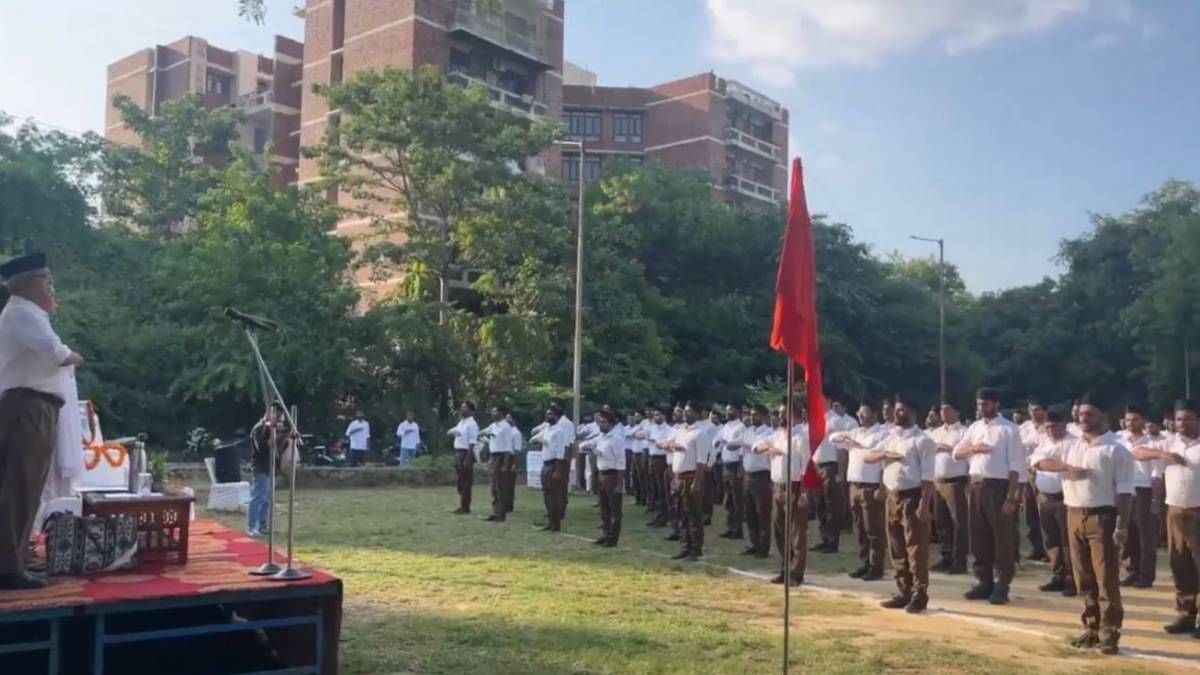
From a place where slogans of “azadi” (freedom) were raised until 10 years ago to one where chants of “namaste sada vatsale matribhume”—RSS prayer which means “O sacred motherland, I always bow to you”—reverberate, the university has undergone a dramatic transformation in the last few years, a gushing news anchor told Santishree Dhulipudi Pandit, Vice-Chancellor of JNU and a swayamsevika herself, in an interaction the day after.
“Yahan pehle sirf vampantiyon ki narrative chalti thi. Doosron ko unhone kabhi permission nahin di (Earlier, only Leftists had a say here. They never gave permission to others),” she responded in broken Hindi.
If there are allegations that the JNU campus looks like an extension of the BJP-RSS office today, it is only because it looked like a “vampantiyon ka office, CPI-CPI-M ka office” until a few years ago, the V-C added, referring to the Left parties.
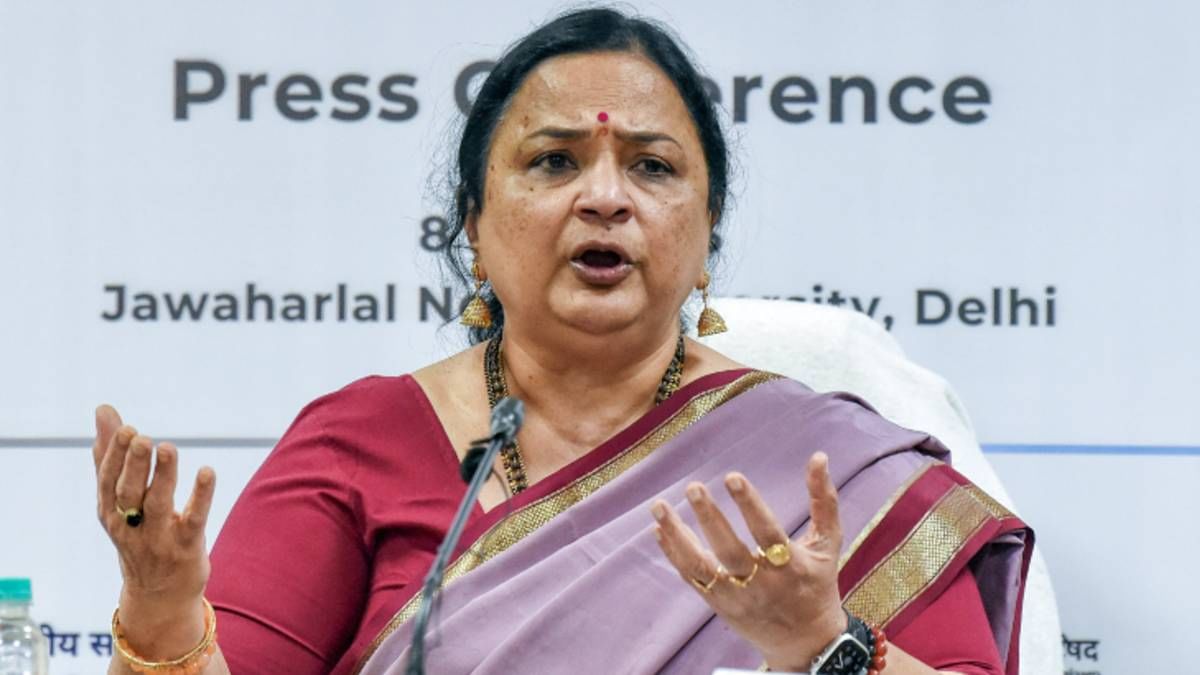
Created in 1969, in the memory of India’s first prime minister, JNU has indeed long been emblematic of the Left’s cultural and intellectual dominance in the country. From Sitaram Yechury to Prakash Karat, from Prabhat Patnaik to Utsa Patnaik and Jayati Ghosh, some of the leading lights of the country’s economic and political Left have come from JNU, giving the impression that the university has actively and exclusively patronised Left intellectualism.
This was not how it was conceptualised though.
In the winter session of Parliament in 1965, a year after Nehru’s death, animated discussions took place on exactly what kind of a university JNU should be. For the sake of ideological consistency with its eponym, the university, it was agreed, should represent the ideals that Jawaharlal Nehru himself lived by—secularism and cosmopolitanism, social justice and scientific temper, his interests in international affairs and his commitment to world peace.
But criticality was to override all these.
M.C. Chagla, then education minister of India, said spiritedly in Parliament that criticality, i.e., debate and dialogue, were to be the integral culture of the university. Even secularism and social justice, “principles to which the whole nation subscribes”, could not be ossified, he pleaded, as he implored the future students and teachers of the university to critique even these ideals, even as they remain committed to them.
It was perhaps this spirit of criticality towards even the founding ideals of the university that speared JNU’s polity to steer away from the Congress, and often, become its most vocal critic.
Was the university’s anti-establishment character its strength, or as many Right-wing ideologues complain, a compulsive fad emboldened by every passing generation of the university? Was JNU really an ideological monolith where no ideology other than the Left’s could flourish?
And finally, how does one historically, institutionally and politically make sense of JNU’s exceptionalism, conceded to by even those who found themselves at the margins of the university’s politics for decades before 2014—the year the BJP decisively stormed to power at the Centre.
Also Read: Inside story of the hunt for Najeeb Ahmed, the JNU student who disappeared into thin air
‘An entirely new type of university’
In 2020, 50 years after JNU was created and four years after it came under unprecedented attack for being a “symbol of state-funded sedition”, a group of eminent academics from the university published a book titled JNU Stories: The First 50 Years.
The names of the chapters from the book—The Classroom, Philosophy at Night, Learning Outside the Classroom, An Accidental Education, Sweet Chai and Restless Thinking—appear to reinforce some of the most common perceptions about JNU’s exceptionalism.
In JNU, questions of politics, political philosophy and theory are quotidian preoccupations. As Sudipta Kaviraj, the doyen of Indian political philosophy, writes in the book, every night, the messes and dhabas of JNU magically seem to turn into “strange amphitheatres of ideas”.
In the process, the ordinary notions of student life are routinely upended. Questions of abstruse political theory enliven not just the classrooms, but the spare time of students, he says.
Even the campus walls are not mere political spectators.
‘Left and Right Hindus of the world unite, you have everything to lose but your caste,’ ‘Whose wealth, whose commons, whose games? Unaccounted drain of public money, displacement and destruction of livelihoods of Delhi’s poor, denial of wages. Commonwealth or Cruel Games?’, ‘Ek Bharat, Shresht Bharat’, ‘Art should disturb the comfortable and comfort the disturbed’—the ubiquitous murals of JNU participate enthusiastically in its vibrant political life. Every summer break, students pour into Chandni Chowk buying paints, brushes and paper with ritualistic zeal.
Go back five decades in time, and one realises that none of this is accidental. JNU’s exceptionalism was written into its creation.
By the 1950s, Delhi University was bursting at the seams. The only university in the national capital, it was struggling to keep up with a new nation’s educational aspirations. The infrastructure was cracking, faculty and funds were inadequate, and the student population on an exponential rise.
In 1963, Chagla went to Nehru with a plan. The university, he said, needs a new campus in South Delhi. Nehru agreed. Then, Chagla proceeded to his next question with some trepidation. The new campus, he told Nehru, should be named “Jawaharlal Nehru University”. Nehru flared up.
“You know my views about raising memorials to living persons. It is entirely wrong. No statues should be raised to living persons and no institutions should be named after them,” Chagla recalled Nehru as saying to him in his autobiography years later. The university should instead be called “Raisina University”, Nehru suggested.
By May 1964, Nehru had passed away. The new campus now could not only be named after him, but had to also be worthy of being built as a memorial to him. It could no longer just be an appendage to Delhi University. It had to be an entirely new, and more importantly, an entirely new type of university.
For the next few years, the country’s leading academics, philanthropists, industrialists and lawmakers all came together to brainstorm on what kind of a university JNU should be. Even before its first brick was laid, the university had already been destined to become the cornerstone of the fledgling nation’s intellectual life.
The late JRD Tata, one of the trustees of the Jawaharlal Nehru Memorial Fund (JNMF) established in 1964, was of the view that the university be constituted on the lines of the French “Grand Ecoles”—institutions that have from the days of Napoleon Bonaparte trained an elite for public service, where only the most gifted minds could enter.
“It is essential,” Tata wrote, “that amid the arid stretches of mediocrity, there be here and there an oasis of excellence”.
The university had to be like no other, it had to belong more to students than to professors—a students’ republic, where students had “a full hand in the shaping of the curricula, of the syllabi, and the entire work and life inside of the university”—G. Ramachandran, a Gandhian educationist and a nominated member of the Rajya Sabha, had said in Parliament.
How would students be admitted and assessed? From what backgrounds will they come? How would the faculty be promoted—on merit or seniority? What would the hierarchy between students and faculty be? Almost as an ode to Nehruvian state planning, for months, government committees, Parliament and even the Ford Foundation, discussed every minute detail of JNU’s founding principles and administrative functioning.
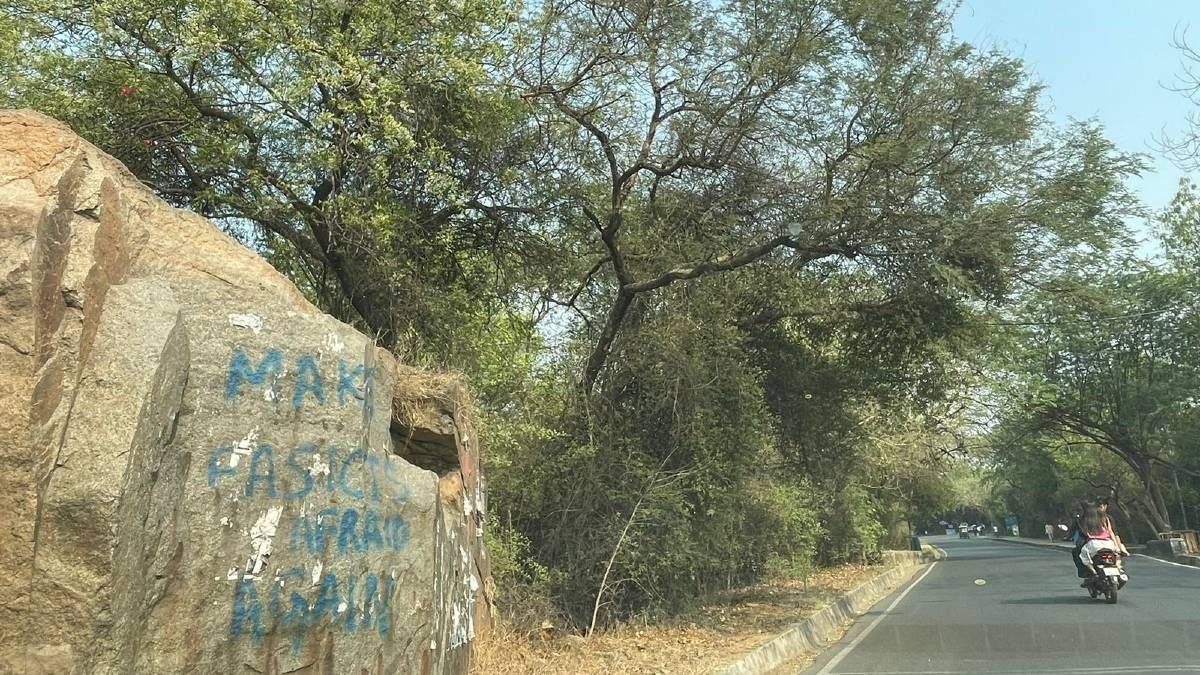
Even the university’s architecture and landscape were deliberated upon with an unusual attention to detail, especially rare for a largely illiterate, nascent republic.
“The dry channels of the monsoon nalas, the gulleys and ravines, sculpted by soil erosion, the disused quarries, the residual hill, the scattered boulder over gulleyed peneplains, the undulating dales and vales—all have been provided by nature,” says the Campus Design Manual for the university. All of them had to be retained.
The hostel buildings—Brahmaputra, Ganga, Godavari, Kaveri—were named after Indian rivers as a mark of national integration. The long, forested roads with arid boulders, where students continue to lounge around aimlessly, were not accidental either.
Sir Basil Spence, the architect of Sussex University in the UK, had advocated strongly for these “waste spaces”, “where friends can walk and talk, discussing the latest seminar or the last piece of research, or the distinguished lecture”.
As argued by Neeladri Bhattacharya and Janaki Nair in the introduction of JNU Stories, for Spence, it was these “waste spaces” of JNU that would elevate it from “a mere group of buildings to the level of place of higher learning”.
Also Read: Diktat for teachers at central universities like JNU & DU: Can’t criticise govt
Turning Left
In 1975, Prakash Karat was a young 27-year-old leader of the Students’ Federation of India (SFI), the students’ wing of the Communist Party of India (Marxist).
“Rather than allow the university (JNU) to become a privileged preserve of upper-class students behind the facade of promoting ‘national integration, secularism, democracy and social justice’, the SFI started with the founding of a democratic students’ union in 1971,” he wrote that year in Social Scientist, the Marxist academic journal.
“Since then, all the struggles launched by the union (the SFI having been its dominant section from the beginning) were principally directed at thwarting the ruling class attempts to fashion JNU into an ideological centre for propagation of the Congress brand of pseudo-radicalism.”
Within a few years of the university’s founding, the Congress government, which had created the university, had come to symbolise a “pseudo-radicalism” for the students’ union. How did this happen? The answer depends on who one talks to.
“One has to see the national context in which JNU was born and the initial years in which its politics evolved,” said Surajit Mazumdar, an economist and former president of JNU Teachers’ Association (JNUTA), and member of the SFI.
“It was the late 1960s, a time of anti-colonialism, a time of intense political turmoil in the country. Nehru was gone, the heady days of Independence were passing, the Congress hegemony was breaking, and there was an upsurge towards egalitarianism,” he explained.
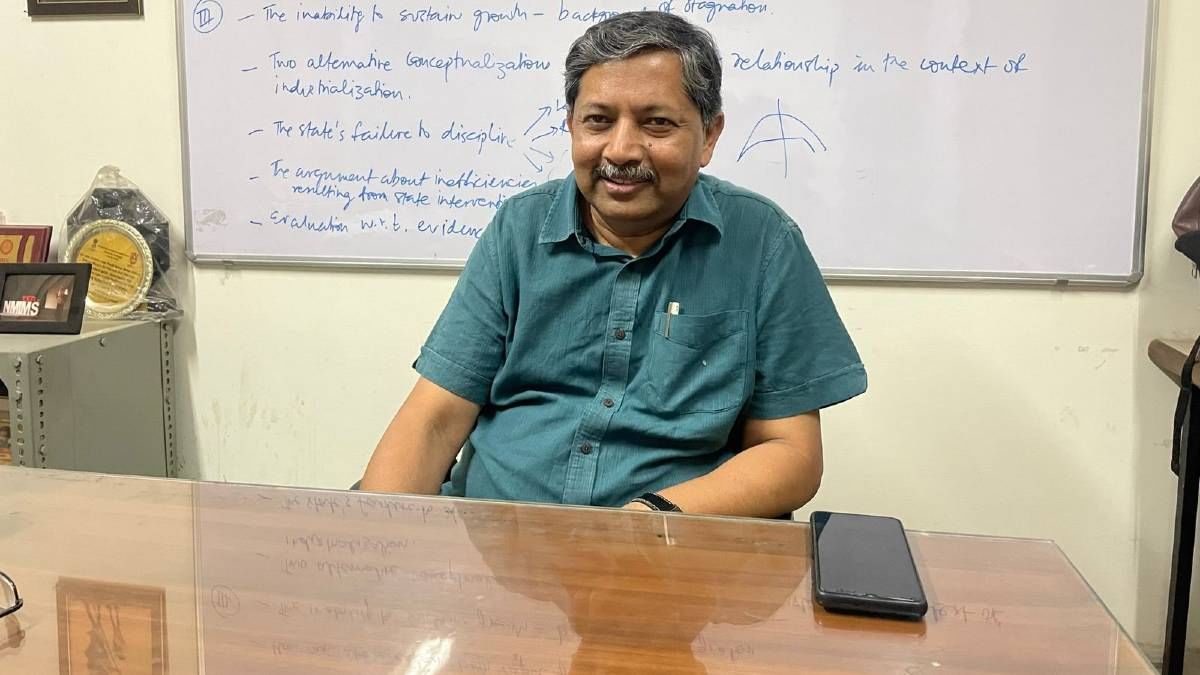
“Socialism was gaining ground, (then PM) Indira Gandhi had just nationalised the banks and abolished the privy purses. Yet, failure to actually achieve socialism on the ground was leading to opposition against the Congress. Student organisations were rising across the country,” Mazumdar added. “It was in this national political context that JNU’s politics began to crystallise. All this penetrated into the formation of this university.”
For JNU’s students’ union, which unlike any other university’s student body was created by students themselves and not by the university statute, the Left turn was perhaps then a natural political outcome. Moreover, for Mazumdar, JNU’s politics and academic excellence are not coincidental. One could not exist without the other, he said.
That was certainly not true in Pramod Kumar’s rendering of the JNU story.
Kumar is a chemistry professor at Delhi University and member of RSS student wing Akhil Bharatiya Vidyarthi Parishad (ABVP), who studied in JNU in the late 1980s and 1990s and returned to his alma mater in 2016 as registrar. For him, JNU’s Left turn was a function of an ideologically-motivated pick-and-choose strategy adopted by the university in its founding years.
“Nurul Hasan, who served as the education minister in the 1970s, belonged to the CPM, and all appointments to JNU happened at his discretion,” Kumar said. “They packed the university with comrades during this time.”
In actuality, Hasan had always been a member of the Congress. But his purported membership of the CPM is instructive to understand the ways of lore-making around JNU.
“Through the 1970s, Leftism flourished on campus unchecked,” he said.
The campus’s relentless protest culture and sometimes-formulaic Marxism inside and outside the classroom alienated others too.
An economics professor, who requested anonymity, said that often, the non-stop protests by students were a huge hindrance to academics.
“They would not attend classes and keep organising one protest after another. It was a nuisance because it was protest for the sake of protest,” she said. “For someone like me, who saw academics not as some stepping stone for a corporate job, but intellectual advancement, it was a roadblock.”
In JNU Stories, political activist Yogendra Yadav, who was a student at the university in 1981-82, writes that it was the dominant Left academic establishment that invited the anti-establishment streak in him.
“Unlike many of my contemporaries,” he writes, “I couldn’t possibly romanticise the Soviet Union or applaud the practice of Indian communists.”
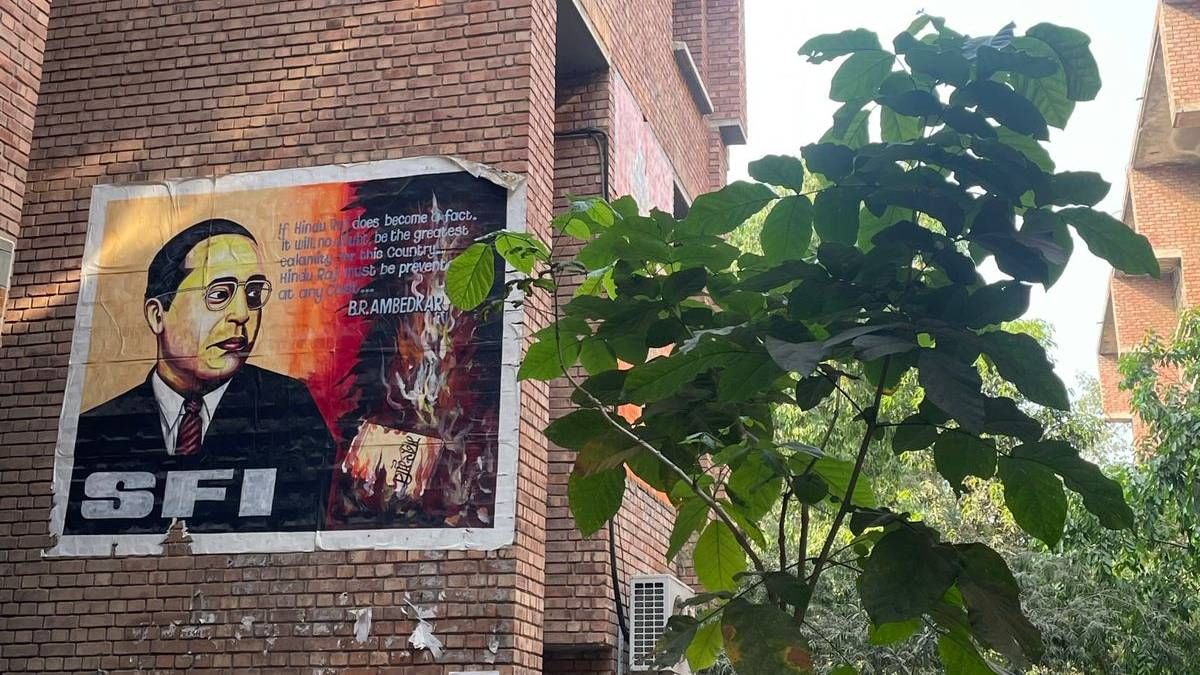
While he applauded the idealism of the Naxalites, their ways, theories and methods left him cold both morally and intellectually. Besides, ridiculing Gandhi was a fad in the JNU of those days. Yadav had no patience for it.
Yet, there remained a space to explore politics outside of Left politics. For, it was in JNU that Yadav discovered at some length the intellectual legacies of socialists Jayaprakash Narayan and Ram Manohar Lohia.
Besides, the majority of students and professors of the time were not affiliated to the formal Left, argued Kaviraj in his essay in the book.
“It is not true that most of the JNU faculty were Leftists: scholars without pronounced loyalty or of different political views were certainly more in number than Left-wing members,” he writes. “The Leftists were characteristically more voluble, and they had a large student following due to various strands of the Left-dominated student politics at the time.”
A current faculty member of JNU expanded on this point.
“Over the last few years especially, people have come to think of JNU as some isolated island that was on its own political trip, permanently stuck in some communist time warp,” she said.
“That was never the case, as has become amply evident now. Student politics was Left-leaning for most part of the 1970s, and that reflected in JNU. As national politics began to take a different course in the late 1980s and early 1990s, the myth of the Left’s unchallenged might in JNU also began to break.”
Also Read: Delhi University is crumbling. And it has united NSUI, ABVP, AISA
Mandal, Mandir and Tiananmen Square
“1980 ke dashak mein, hum sab JNU mein kafir mane jaate the (in the 1980s, we were all considered infidels in JNU),” said Kumar as he sat in the chemistry lab of DU’s Aurobindo College, where he teaches.
“If you told anyone that you were from the ABVP, you could not find a girlfriend in JNU,” he quipped. “There was extreme ideological apartheid. ABVP existed, but it was all hush-hush.”
“The faculty actively discriminated on the basis of ideology. Students who criticised the Left would not be admitted, if by any chance they were admitted, they were assessed terribly… Anonymity was our most effective armour,” he said.
But according to him, the Left’s supreme reign began to show cracks by the late 1980s.
“Three things happened,” he proffered. “One, communists in India supported the Chinese state and its excesses, even on students, when the Tiananmen Square protests broke out (student-led pro-democracy agitation in Beijing). Two, the communists supported Mandal reservations (for Other Backward Classes), turning many of their erstwhile supporters away from them. And three, (BJP leader L.K.) Advani’s rath yatra began to attract many students, who now felt that there was someone who would speak up for their religious beliefs.”
The Left’s “floating supporters” began to drift away and look for alternatives. “That is when the ABVP emerged in a real way. We knew immediately that our roots in JNU are getting strong,” Kumar said.
This was such a heady time for us, he reminisces with a glint in his eye. “We began to invite Sushma Swaraj, Arun Jaitley, Arun Shourie, Arif Mohammad Khan, Uma Bharati on campus for talks. Talks about the Ram Janmabhoomi Movement, Kashmir, Gandhi, etc. became election talking points… we brought JNU back from Kremlin to Delhi,” he said, laughing.
If the 1980s was the decade when the ABVP’s roots were taking hold in JNU, as Kumar insists, by 1996 it had already become a full-grown tree. It won three of the four central panel seats in the students’ union election—an event so unbelievable that it seems to have been repressed by many Right-wing critics on campus, who don’t quite seem to remember it.
“That was the election when SFI and AISA (All India Students Association, wing of the CPI-ML) fought separately,” Kumar said. “They were so taken aback by our victory that they have continued to fight every election together since.”
The Left’s undefeatable alliance proved to be an obstacle for the ABVP for several years. With the exception of 2000, when the ABVP won the JNUSU president’s post for the first and last time, victory continued to elude the organisation. A deeply fragmented and ideologically divided Left continued to dominate JNU’s politics.
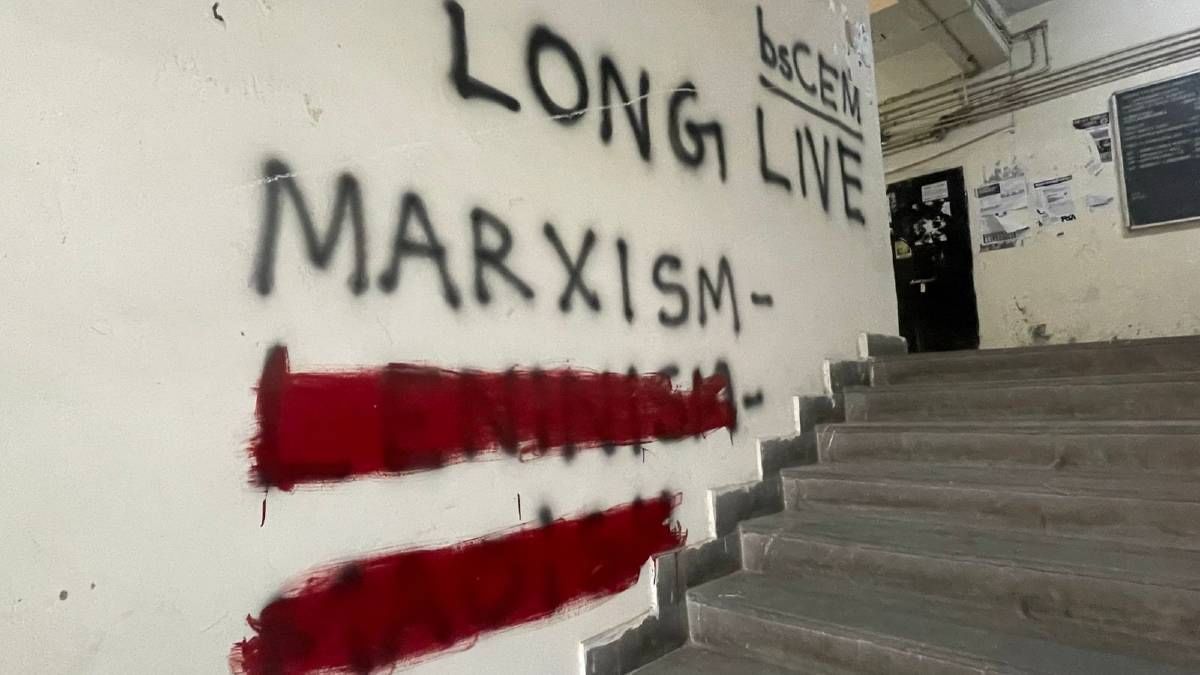
Meanwhile, the 1990s and early 2000s exposed ordinary middle-class Indians to an enchanting new world of markets, prosperity and aspiration. For this aspirational section, JNU became an island of esoteric academia, a hub of jholawallahs lost in the self-indulgent and idle pursuits of intellectualism for the sake of intellectualism, and activism for the sake of activism.
Never mind, that through these years, the university acted as a waiting room for future Indian Administrative Service (IAS) and Indian Police Service (IPS) officers, who enrolled themselves in obscure courses while they prepared for the Union Public Service Commission examination.
On the margins of the imagination of a new, information technology and MBA-enamoured middle-class India, JNU was now a not-too-frequent subject of mockery. Yet, it was far from being an object of collective contempt, let alone a symbol of sedition and threat to national security. The country’s finest social science university would have to wait another 20 years to earn that distinction.
A battleground
In JNU, 9 February, 2016, is spoken of as the university’s own BC-AD divide. “Everything has changed after 9 February, 2016,” is a common refrain.
It was the third anniversary of the hanging of Parliament attack convict Afzal Guru. A few students gathered to discuss Kashmir’s right to self-determination. None of this was unprecedented. But that night, TV cameras appeared on campus.
Video clips, in which purportedly seditious slogans were being raised, too appeared. A few days later, student leaders, including then JNUSU president Kanhaiya Kumar and Umar Khalid, were arrested for sedition.
National media descended over JNU as absurdly as it did over the fictitious village of Peepli in the 2010 film Peepli Live. Overnight, the university turned into a fortress under siege. Television screens crackled with breathless debates over the university’s “anti-national” character, sexual permissiveness, and its parasitic drain on “taxpayers’ money”.
JNU was no longer just a university. It was a breeding ground for those who sought to break up India using intellectual perfidy—the home of India’s tukde-tukde gang.
Four years later, on 5 January, 2020, came the physical attack. Some students on campus were protesting against a fee hike and the Citizenship Amendment Act (CAA). A masked mob armed with sticks, rods and stones stormed the campus. Internet and electricity were reportedly cut off. Physical attacks on the protesting students, including then-JNUSU president Aishe Ghosh, and faculty members followed, leaving dozens with cuts, fractures and deep bruises. The police stood by.
Also Read: What sedition headlines don’t tell you about JNU: It’s a leader in science research
A new JNU
“You ask how JNU has changed in the last 10 years? This is how it has changed,” says a beaming Bandana Jha, sporting a purple cotton saree with a bright pink and gold border, pointing towards a large photograph of the Ram Mandir in Ayodhya on her table.
“Ten years ago, it would have been impossible for a JNU faculty to profess their Hindu faith so openly,” she says.
Jha is a professor at the university’s Centre for Indian Languages (CIL) since April 2024. She returned to JNU nearly 23 years after she graduated from its Hindi department in 2001.
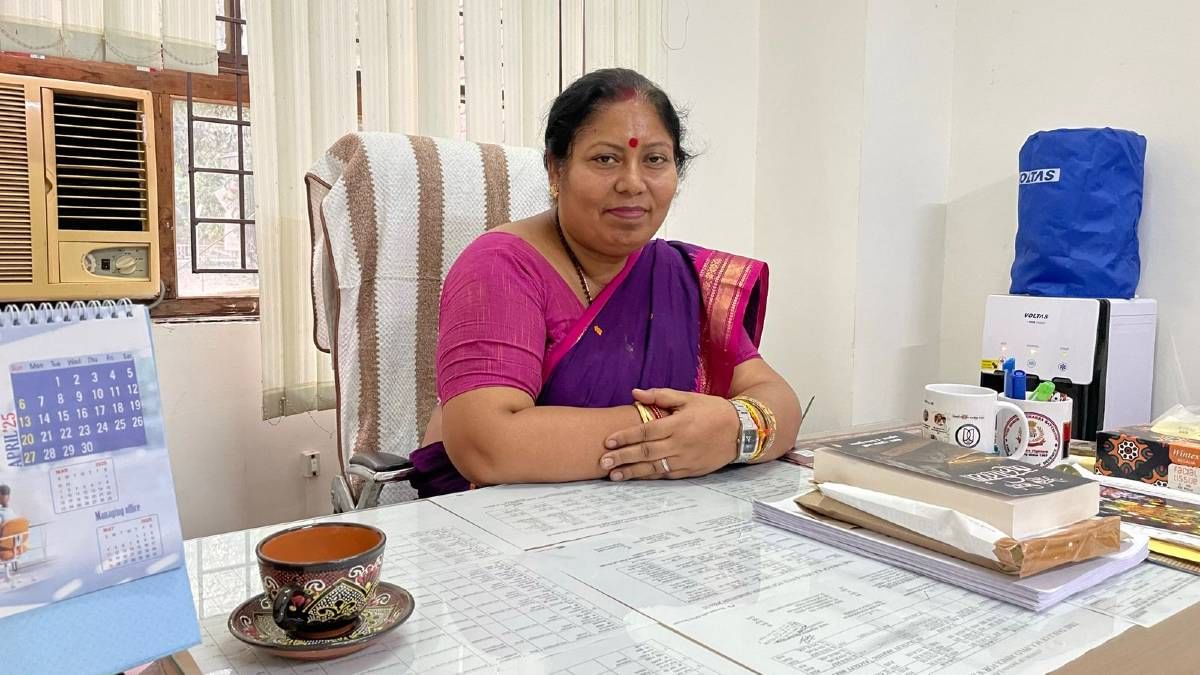
“There is a world of difference in JNU since then. There was hardly anything Bharatiya about this campus and its ethos,” Jha, also an ABVP activist, claims.
Now, it has all changed, she declares gleefully as she brandishes the university calendar for the year 2025, and sifts through its pages.
There are images of the Centre for Hindu Studies, Savitribai Phule and Ahilyabai Holkar captioned “Nari Shakti”, Chhatrapati Shivaji Maharaj Centre for Security & Strategic Studies, and Vidyaranya Institute of Knowledge and Advanced Studies (VIKAS), which claims to decolonise knowledge systems with a “vision rooted in Sanatani and Dharmic traditions”.
There is also a sea change in the kind of research topics encouraged by the faculty.
“In my department, I am supervising a PhD on the feminism of the Panchakanya, 100 years of Kalyan Patrika, Advaita Ashram, among other topics. All this was unimaginable earlier,” says Jha. “Panchakanya” refers to the group of five women from the Hindu epics Ramayana and Mahabharata—Draupadi, Ahalya, Mandodari, Kunti and Tara.
“When I was a student here, the only thing they would teach about Bharat was how its civilisation was fraught with the caste system. The fact that critiques of the caste system existed within the culture of Bharat itself was never taught.”
Now, we are changing all of that, she says valiantly. “Even the older teachers are changing—jaisa raja, waisa bhes (like leader, like followers).”
Shikha Swaraj, an ABVP activist who contended for the post of JNUSU president in this year’s election, agrees. But it is not just that the older, Left-leaning crop of professors at the university are changing. They are also retiring, she adds with some relief.
The kind of students who are now coming to JNU too are different, Swaraj, whose PhD topic is ‘US-Israel strategic cooperation and its impact for India’, says.
In 2018, the format of the JNU entrance exam changed from essay-type to MCQ-type.
“Since then, they (the faculty) are not able to filter out students on the basis of ideological leanings,” she claims. “Now, the students who are coming to JNU have a clear goal—padhai-likhai aur naukri (studies and employment). They know politics will not take them anywhere.”
There are other reasons for the apparent change in students’ academic orientation.
In 2018, JNU established its School of Engineering (SoE). In 2019, came the Atal Bihari Vajpayee School of Management and Entrepreneurship. In 2018, the university also introduced compulsory attendance for students and teachers for the first time in its history—a step that was consciously ruled out in the founding years of the university for being infantilising and inconsistent with the spirit of research and teaching.
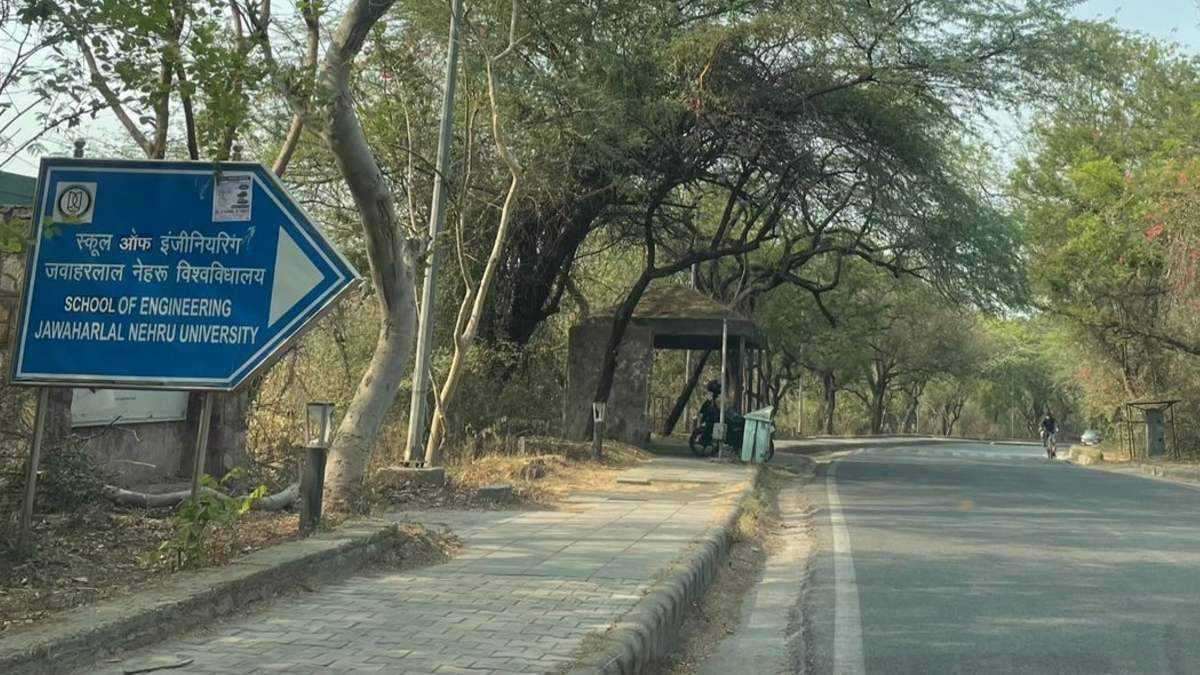
“The university has ceased to be a social science research university,” a professor, who requested anonymity, said. “Until just a few years ago, divided between MPhil and PhD degrees, 60 percent of students on campus were research scholars. Now, they are just 20-30 percent. First, the MPhil programme was abolished, and then the number of PhD students a professor could supervise was brought down from 20-25 to just eight.”
The ABVP, meanwhile, has been on the ascent. In the elections held this year, it won a central panel post after almost a decade, and lost two others by narrow margins. It also won 23 of 42 councillor seats, including two at the School of Social Sciences (SSS), long the hub of Marxist professors and students.
“Earlier, admittedly, the teachers had a bias against students who subscribed to the BJP-RSS ideology, but there was never a full-blown attack on academics itself,” the professor said.
“The problem is that as a result of the formal Left’s volubility all these years, JNU came to represent the deep feelings of victimhood and otherisation harboured by the Right,” he said. “That is why winning JNU has been almost more important for them than winning some state elections. It is like finally conquering the institution that has represented their intellectual marginalisation and humiliation for decades.”
What has been lost in the process is more important than an ideological battle, he rued.
(Edited by Nida Fatima Siddiqui)
Also Read: BJP leaders’ launchpad for decades, ABVP is the rising star of student politics. It’s getting bigger



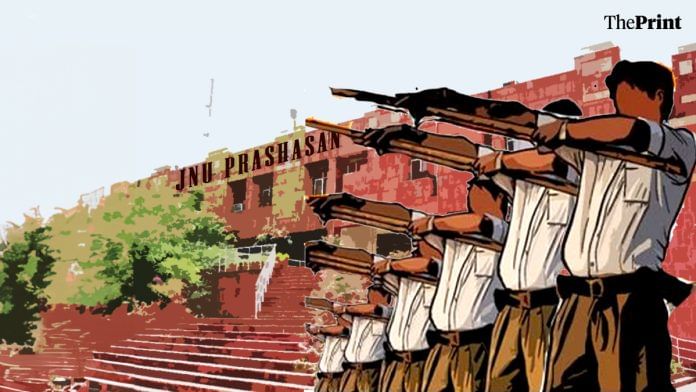



Interestingly the article cannibalised from Rakesh Batabyal’ s book and his chapter of the other book but does not even refer to that book which is the pioneering work I. E., JNU the making of a University ( 2014 ) published much before the edited volume cited. Writer did a shoddy job.
Strange meandering article. Tum kahna kya chaheto ho
Excellent and well-researched writing.